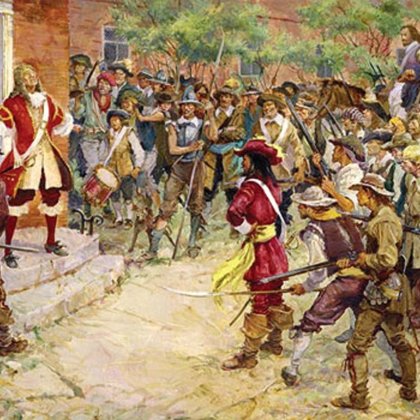THE THIRTEEN COLONIES WERE A GROUP OF SETTLEMENT THAT BECAME THE ORIGINAL STATES OF UNITED STATES OF AMERICA.NEARLY ALL THE COLONIES WERE FOUNDED BY ENGLISH,LOCATED ALONG THE EAST COAT OF NORTH AMERICA.IDEAS ABOUT DEMOCRACY AND EQUALITY LIVED AND GREW IN THE ENGLISH COLONIES FROM THE VERY BEGINNING.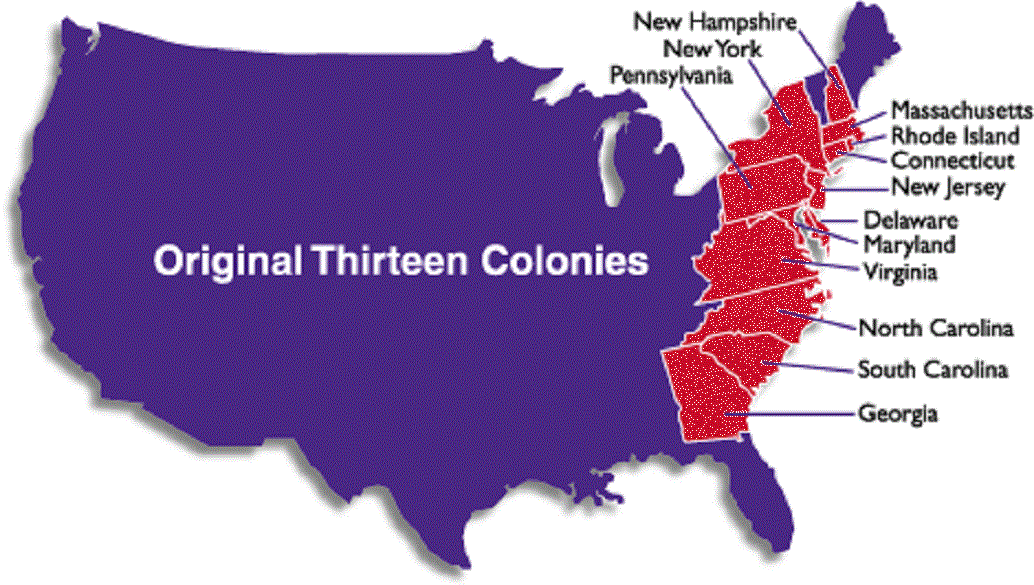
Map Thirteen Colonies 1775, where the states of Vermont and Maine were during the colonial period. Connecticut, Delaware, Georgia, Maryland, Massachusetts, New Hampshire, New Jersey, New York, North Carolina, Pennsylvania, Rhode Island, South Carolina, & Virginia.
The British Government regulated the colonial trade for her own advantage. The trade policy of England was the colonies were.The Navigation Act which was passed in 1660 was again practised by George Greneville, the Prime Minister of England. Before this Act, the Colonist’s accepted the manufactured goods of England only by exporting the raw materials to England. But when the Navigation Act was reintroduced, the Americans were forbidden to export their native products directly to other European countries. They could import their necessary goods only through England from other countries. The British Government imposed taxes on the American Colonies.These British colonies were explored, settled and colonised over more than a century, beginning with Virginia (1607) and Massachusetts (1620), and concluding with the settlement of Georgia in 1732. Each colony began as a claim and settlement by a British company or expedition group. Over time the 13 colonies developed into discrete political entities. As part of the British Empire, the 13 colonies shared a common heritage and some obvious similarities. Because of this – and because the colonies later joined together in revolution we tend to think of them as a unified and homogenous group. This was far from the case. The 13 colonies were marked by differences in geography, climate, natural resources, population, economic production and how they were governed. Intercolonial tensions were not uncommon, usually fuelled by disputes over trade, borders and land claims.Seeking independence from England and the British Crown, thirteen American colonies declared themselves sovereign and independent states. Their official flag is shown below.In the early history of America, western borders of most colonies varied some from the modern-day state borders shown above - because in the west - the British still controlled vast territories up to the Mississippi River. At that time the colony of Virginia included all of the lands of what is now called West Virginia.In the end the thirteen colonies were: Delaware, Pennsylvania, New Jersey, Georgia, Connecticut, Massachusetts Bay, Maryland, South Carolina, New Hampshire, Virginia, New York, North Carolina, and Rhode Island and Providence Plantations. Massachusetts, Rhode Island, Connecticut and New Jersey were formed by mergers of previous colonies.The driving factor behind British colonisation in America, at least initially, was gold. Like the Spanish in South America, British explorers and settlers hoped to find large deposits of gold or other precious minerals. When this was not forthcoming, land and natural resources replaced gold as an incentive for colonisation, settlement and migration. Land was in extremely short supply in Europe, where it was monopolised by wealthy royals and aristocrats but it was plentiful in the New World, where there was enough space for thousands of settlers to become freeholders or yeoman farmers, rather than mere tenants. The abundance of raw materials in North America was another potential source of profit. Timber, rice, grain, tobacco, cotton, indigo, furs, fish and other commodities could be harvested or grown in abundance in America. The availability of tall timber provided the materials for a colonial shipbuilding industry. Later, the discovery of iron ore encouraged the formation of local ironworking foundries.The 13 colonies were populated rapidly during the late 17th and 18th centuries. Thousands of settlers emigrated after being enticed by European companies, who advertised ‘enormous opportunities’ for those intrepid enough to cross the Atlantic. An unknown number of Europeans, probably in excess of half a million, arrived in the colonies as indentured servants. Many found the New World more prosperous and comfortable. Farming land was readily available, food was plentiful and living standards – at least for the lower classes – were better than those of Europe. In 1650 there were an estimated 55,000 Europeans in the 13 colonies. This number had increased almost fivefold (265,000) by 1700. The European population reached one million by 1750 and two million sometime around 1763. Immigration continued apace, even at the height of the Revolutionary War. In addition to European population growth, almost 300,000 African-American slaves were landed in the British colonies between 1620 and the outbreak of the revolution in 1765.The 13 colonies were largely focused on agriculture and primary production. The vast majority of British colonists worked on plantations, farms or harvesting natural resources. Manufacturing in the colonies was confined to small businesses. British mercantilist legislation such as the Iron Act (1750) discouraged or prohibited the formation of large operations that might rival British companies. Many secondary goods such as clothing, furniture, machinery and weapons were still imported from England. The lack of major industries meant that American cities were small. The majority of colonists lived in small communities, towns, villages or on the frontier. Most colonists lived relatively independent lives, removed from the control or interference of governments, both their own and that in London. Most Americans did not think themselves “Americans” at all; they were yet to develop nationalism or a sense of American identity. Instead, most considered themselves British subjects and natives of their colony – Virginians, South Carolinians, Marylanders and so forth.The 13 British colonies were not alone on the North American continent, with three other European powers laying claim to territory. The Spanish were the first to arrive, after Christopher Columbus’ famous expedition that ‘discovered’ North America in 1492. The French began exploring the continent in 1524 and by the end of the century was attempting permanent settlements. The Dutch also commissioned exploration of the North American coastline (1609) and initiated settlements 14 years later. By 1660 the Dutch controlled the area now occupied by New Jersey and eastern New York state. They surrendered their American colonies to England in 1667, after defeat in the Second Anglo-Dutch War. By 1750 some 80 per cent of the North American continent was controlled or influenced by France or Spain (see map). Their presence was a source of tension and paranoia among those in the 13 British colonies, who feared encirclement, invasion and the influence of Catholicism.
 The Founding of Maryland, 1634. The Maryland Colony was one of the original 13 colonies located on the Atlantic coast of North America. The original 13 colonies were divided into three areas consisting of the New England, Middle and Southern colonies. The Maryland Colony was classified as one of the Southern Colonies. The Province of Maryland was an English colony in North America that existed from 1633 until 1776, when it joined the other 12 of the 13 colonies in rebellion against Great Britain and became the U.S. state of Maryland.
The Founding of Maryland, 1634. The Maryland Colony was one of the original 13 colonies located on the Atlantic coast of North America. The original 13 colonies were divided into three areas consisting of the New England, Middle and Southern colonies. The Maryland Colony was classified as one of the Southern Colonies. The Province of Maryland was an English colony in North America that existed from 1633 until 1776, when it joined the other 12 of the 13 colonies in rebellion against Great Britain and became the U.S. state of Maryland.
Rough seas and storms prevented the Mayflower from reaching its intended destination in the area of the Hudson River, and the ship was steered instead toward Cape Cod. Because of the change of course, the passengers were no longer within the jurisdiction of the charter granted to them in England by the Virginia Company. Within this legally uncertain situation, friction arose between the English Separatists (the Pilgrims) and the rest of the travelers, with some of the latter threatening to leave the group and settle on their own.To quell the conflict and preserve unity, Pilgrim leaders (among them William Bradford and William Brewster) drafted the Mayflower Compact before going ashore. The brief document (about 200 words) bound its signers into a body politic for the purpose of forming a government and pledged them to abide by any laws and regulations that would later be established “for the general good of the colony.” The compact was signed by nearly all of the Mayflower’s adult male passengers (41 of a total of 102 passengers) while the ship was anchored at Provincetown harbour. Its authority was immediately exercised when John Carver, who had helped organize the expedition, was chosen as governor of the new colony.The Mayflower Compact was not a constitution but rather an adaptation of a Puritan church covenant to a civil situation. Furthermore, as a provisional instrument adopted solely by the colonists, the document did not solve the matter of their questionable legal rights to the land they settled. (A patent was eventually obtained from the Council for New England in June 1621.) Still, the Mayflower Compact became the foundation of Plymouth’s government and remained in force until the colony was absorbed into the Massachusetts Bay Colony in 1691. Although in practice much of the power in Plymouth was guarded by the Pilgrim founders, the compact, with its fundamental principles of self-government and common consent, has been interpreted as an important step in the evolution of democratic government in America.As the original version of the Mayflower Compact was lost, the oldest known source in which the text of the document (provided below) can be found is Mourt’s Relation (1622), an account of Plymouth’s settlement written by Edward Winslow and William Bradford.In the name of God, Amen. We whose names are underwritten, the loyal subjects of our dread sovereign lord King James, by the grace of God, of Great Britain, France, and Ireland King, Defender of the Faith.Having undertaken, for the glory of God, and advancement of the Christian faith, and honor of our king and country, a voyage to plant the first colony in the northern parts of Virginia, do by these presents solemnly and mutually in the presence of God and one of another, covenant, and combine ourselves together into a civil body politic, for our better ordering and preservation, and furtherance of the ends aforesaid; and by virtue hereof to enact, constitute, and frame such just and equal laws, ordinances, acts, constitutions, offices from time to time, as shall be thought most meet and convenient for the general good of the colony: unto which we promise all due submission and obedience. In witness whereof we have hereunder subscribed our names; Cape Cod, the 11th of November, in the year of the reign of our sovereign lord King James, of England, France and Ireland eighteenth and of Scotland fifty-fourth, Anno Domini 1620.The remaining Susquehannock have little choice but to surrender to the Iroquois. Considering the circumstances, they are treated well. Under the terms of the agreed peace, the Susquehannock are resettled amongst the Mohawk and Oneida, becoming members of the Iroquois 'covenant chain' (a series of alliances and treaties developed during the seventeenth century, primarily between the Iroquois league and the British Colonies, with other Native American tribes added). Their dominion over the Delaware and other former allies is also surrendered to the league. During the following years, several Susquehannock rise to leadership as Iroquois war chiefs. Although treated with respect, the Susquehannock are not free.
Feature the Province of Pennsylvania is founded, although areas of the territory have already been settled by Dutch and Swedes since 1631. It is named after the owner of the Royal Charter, the Quaker William Penn, 'Penn-silva-nia'; silvia being Latin for forest or woods. He had been baptised in the church of All Hallows by The Tower in London in 1644, a year after his father (also William Penn) had been married at the Guild Church of St Martin-within-Ludgate (see feature links for both churches).Having been expelled from Oxford and arrested for his Quaker beliefs, Penn entertains the curious notion that his royal charter does not override native rights to the land. Before beginning his 'Holy Experiment' - a colony with religious tolerance - Penn sends William Markham to negotiate the purchase of south-eastern Pennsylvania. In November, Penn arrives and signs a treaty at Shackamaxon (Philadelphia) with Tamanend, the sachem chosen by several groups of Lenape to represent them for the occasion. The agreement has been described by Voltaire as 'the one treaty with the Indians that the whites broke'.
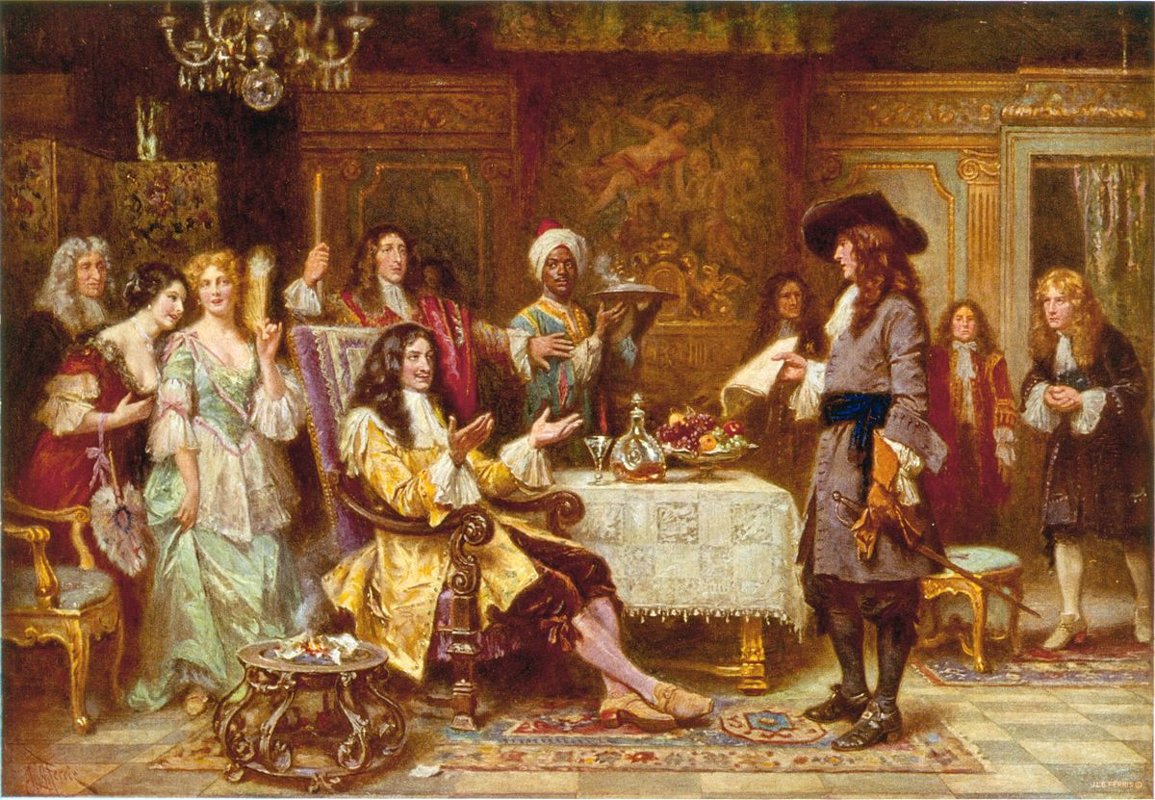 William Penn attempts to sign a treaty with the Susquehannock, only to learn that they (like the Delaware) first need Iroquois approval. Subsequent dealings by the Pennsylvania government of the British Colonies concentrates on the Iroquois and ignores the subservient tribes.
William Penn attempts to sign a treaty with the Susquehannock, only to learn that they (like the Delaware) first need Iroquois approval. Subsequent dealings by the Pennsylvania government of the British Colonies concentrates on the Iroquois and ignores the subservient tribes.
The European colonization of the Americas describes the history of the settlement and establishment of control of the continents of the Americas by most of the naval powers of Europe.Political map of the Americas in 1794 Spanish conquistador style armour.Systematic European colonization began in 1492, when a Spanish expedition headed by the Italian explorer Christopher Columbus sailed west to find a new trade route to the Far East but inadvertently landed in what came to be known to Europeans as the "New World". Running aground on the northern part of Hispaniola on 5 December 1492, which the Taino people had inhabited since the 7th century, the site became the first European settlement in the Americas. European conquest, large-scale exploration and colonization soon followed. Columbus's first two voyages (1492–93) reached the Bahamas and various Caribbean islands, including Hispaniola, Puerto Rico and Cuba. In 1498, John Cabot, on behalf of England, landed on the North American coast, and a year later, Columbus's third voyage reached the South American coast. As the sponsor of Christopher Columbus's voyages, Spain was the first European power to settle and colonize the largest areas, from North America and the Caribbean to the southern tip of South America.The tribes of Native Americans discovered by the Anglo Europeans when they arrived in North America did not represent a unified group of people, and to be honest, they still don’t. Different people had developed different levels of civilization depending on where they lived and how their societies had evolved. There were planters and agriculturally dependent people as well as hunter-gatherers, people with established communities, often actual cities, that were centralized and there were nomadic tribes that moved with the seasons. Many of these were warlike people who defended the regions of their control in order to ensure hunting viability as well as security, but some, if not most, had no sense of “ownership” of the land they occupied. It was more a matter of supremacy and dominance than of possession.Europeans had a differing notion and a higher level of social and technological development. They had firearms, for one thing, and they were better organized socially and politically. They arrived in large numbers, bent mostly on farming, but they were also hunters and gatherers, but they additionally came with a profound sense of possession as a part of their social and cultural makeup. And they were fueled by a religious fervor that motivated them to a commonly held belief that the New World was given to them by God, and that it was not only their right but their duty to take possession of it, in much the same way that the ancient Hebrews took possession of Canaan and drove the paganistic Canaanites out or killed them off.As the Anglo-European civilization established itself and pushed more and more into the interior of the continent their need and desire for more and more land and the requisite surveying and mapping and parceling out of what to them was raw wilderness into organized plats of property that were liable for acquisition and possession prompted them to deal with the Native American tribes they encountered. This process began almost immediately from the time the first settlers arrived in New England, New York, and certainly in Virginia. They dealt with the tribes they encountered as if they were Euro-centric civilizations with similar if not identical notions of land and ownership. They recognized that they could be hostile and dangerous, but they sought to deal with them in the same way they dealt with hostile and dangerous peoples they encountered anywhere.Treaties were offered, signed, and made, but the European sense of law and contracts was complex and fraught with corruption and chicanery, often, something that confused and bewildered many tribal leaders, some of whom had no real right to deal the lands they bargained away for various exchanges of goods or merely for assurances of peace. The land, as such, to them was available, and if the Europeans wanted to claim it, it was no matter to them; but when the Europeans attempted to settle it and “own” it and even defend it, conflicts arose. Europeans also did not have a sympathetic attitude toward warfare and raiding for both glory and plunder, or just as a rite of passage, or to carry on generational tribal feuding that had been going on for decades or longer.As the Anglo-Europeans pushed westward they encountered more and more people who were, to them, less sophisticated, more primitive, and, to them, more savage than some of those more advanced and developed civilizations of the eastern part of the Americas. Tribes of the upper Midwest, the Great Plains, and the mountains were more warlike, viciously defensive, and less well organized than those of the East, but to the Europeans, they were pagan savages of an inferior race that had, ultimately, to be removed or, finally, extirpated entirely to make way for the Christian-dominated European civilization. They saw them as being subhuman, unable to assimilate or be absorbed into the Ango-European mold. They deplored the common practices of Native American society, particularly as regards marriage and loyalty, sacrifice and other traditional or religious practices they found disgusting or dangerous. (A wonderful irony is that when Cortes witnessed human sacrifice as practiced by the Aztecs, he was outraged by the savagery of it; but on the same day he witnessed it, more than a dozen people were burned at the stake as “heretics” in Spain as part of an “auto de fe,” to the glory of God, something that Cortes would likely have approved of entirely.) They also found Native Americans to be easily duped, bought off, or, ultimately, defeated in armed conflict so that the land they dominated would become more available and safe to settle and occupy and, of course, possess.
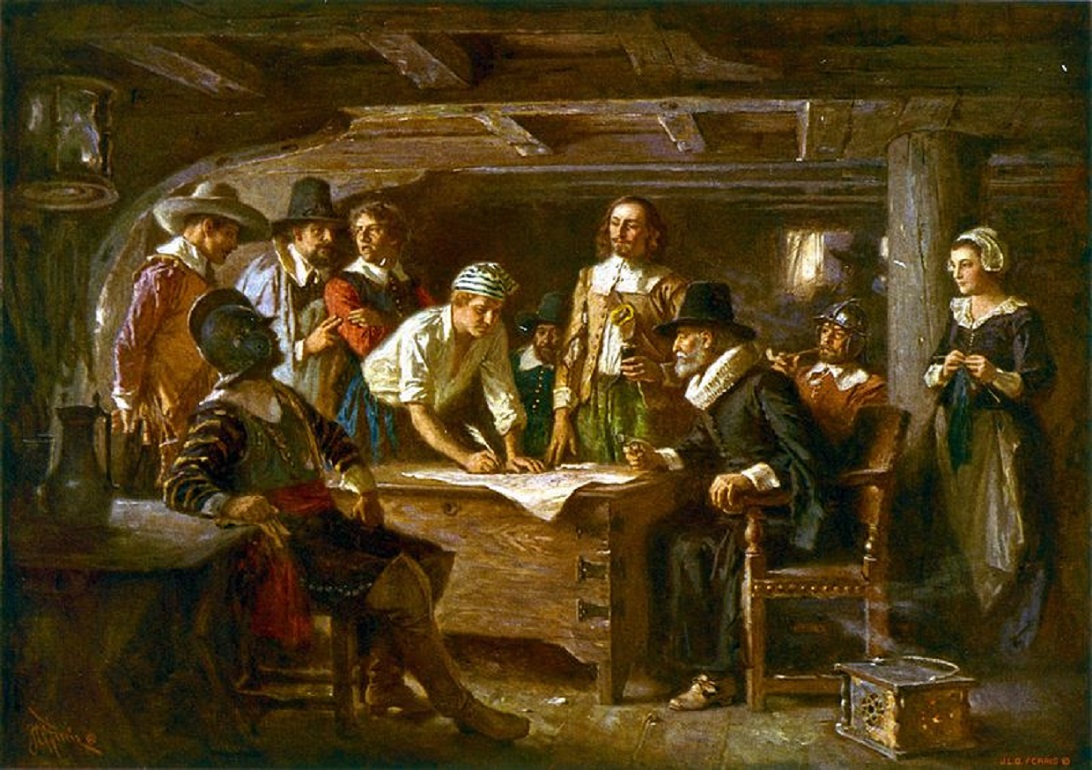 The Mayflower Compact was the first governing document of Plymouth Colony. It was written by the male passengers of the Mayflower, consisting of separatist Puritans, adventurers, and tradesmen. The Puritans were fleeing from religious persecution by King James of England.
The Mayflower Compact was the first governing document of Plymouth Colony. It was written by the male passengers of the Mayflower, consisting of separatist Puritans, adventurers, and tradesmen. The Puritans were fleeing from religious persecution by King James of England.
The Mayflower Compact was signed aboard ship on November 11, 1620. They used the Julian Calendar, also known as Old Style dates, which was ten days behind the Gregorian Calendar. Signing the covenant were 41 of the ship's 101 passengers while the Mayflower was anchored in Provincetown Harbor within the hook at the northern tip of Cape Cod.No generalization about Native Americans is correct. Each group of people and each tribal entity within that group is unique and had differing attitudes and responses to encounters with the Europeans as they developed and pushed westward. Tribal units were notoriously small, and the Europeans were notoriously well-organized into huge enterprises that were completely supported by those who continued to arrive and by the established institutions and governments behind them. They were better educated, more technologically astute, more immune to killer diseases that were totally unknown to Native Americans, and well-equipped with transportation and weapons and resources that far outstripped any Native American counterpart they encountered.As racial attitudes informed the bigotry and prejudices inherent in the way Europeans dealt with all people who were indigenous to any area they invaded and occupied and claimed from the Americas, to Africa, to Asia, to the Middle East, they justified their actions in their religious beliefs and in the confidence they had in their perceptions of their civilized institutions.It’s an easy matter to judge the Anglo-Europeans, now Americans, now as ignorant, bigoted, racists, and greedy land-grabbing thieves. To their minds, though, and to their attitudes, what they were doing was justified entirely by their faith and their commitment to the growth and advancement of their culture. To many if not most people of the nineteenth century, the white, Eurocentric civilization was superior in every way to any other civilization they might encounter, including the ancient and venerated civilizations of China or Japan or India or certainly of Arabia. The unstated creed of their movement West was “convert or die,” not only in a religious sense but in a social and cultural sense as well. But even a conversion was not sufficient to elevate the tribal individuals they met to a level of racial equality or deference. The prevailing attitude of Americans from the seventeenth century forward was that the world was better off without these primitive, savage people, something that was articulated in Phil Sheridan’s famous quote (attributed), “The only good Indian I ever saw was dead.”Finally, after the Battle of the Little Bighorn, which took place in 1876 and was one of the most shocking events to the American public that ever took place (It was tantamount to 9/11 or Pearl Harbor, in terms of its impact and lasting effect on US governmental policy.) American attitudes hardened, leading to a program of extirpation through starvation and deprivation and racial isolation and discrimination against Native Americans, policies that have lasted to this day. Legal battles rage as I write this between now well-organized and legally astute tribes and the US or some state governments over treaties that were sometimes signed two centuries ago. Court cases involving tribal boundaries and disputed ownership of land are presently being decided. The difference is that the Native Americans, today, have finally “converted,” if not religiously then at least culturally and educationally, and are fighting back with well-organized and concerted efforts to reclaim if not sustain their lands and their cultural and social historical identities.But the treatment of Native Americans, while fully understandable (no matter how deplorable) in an historical sense, today is utterly disgraceful and shameful. No other nation, not the Australians nor the Canadians nor even the Mexicans, to be honest, have remained mired in the racist, bigoted, narrow-mindedness that one finds in US policies regarding Native Americans. Only the South Africans have carried such policies of isolation and deprivation of native peoples for political purposes into modern times with the enthusiasm of the US government and people. The lands we occupy in all fifty of our states rightfully belong to the people who originally occupied them. That they were taken by the right of conquest does not entirely mitigate against the moral question of rightful ownership. During the 1700s Britain and France fought a number of wars on European soil. But the most important battles of their long struggle took place in America. The conflict between Britain and France in America was called the French and Indian War. It occurred because both countries claimed some of the same American land.Colonization British soldiers, American colonists, and some Native American tribes fought against French soldiers and France's many Indian allies. At first the British lost most of the battles. The French had learned to fight as the Native Americans did: they would sneak up for a surprise attack and then slip back into the woods. In the 1760s the British weren't prepared for this kind of warfare.As the conflict wore on, however, the British finally defeated the French. In 1763 England and France signed the Treaty of Paris. France had to give nearly all the land it claimed in North America to Britain. Spain, because it had supported France, had to give Florida to Britain.
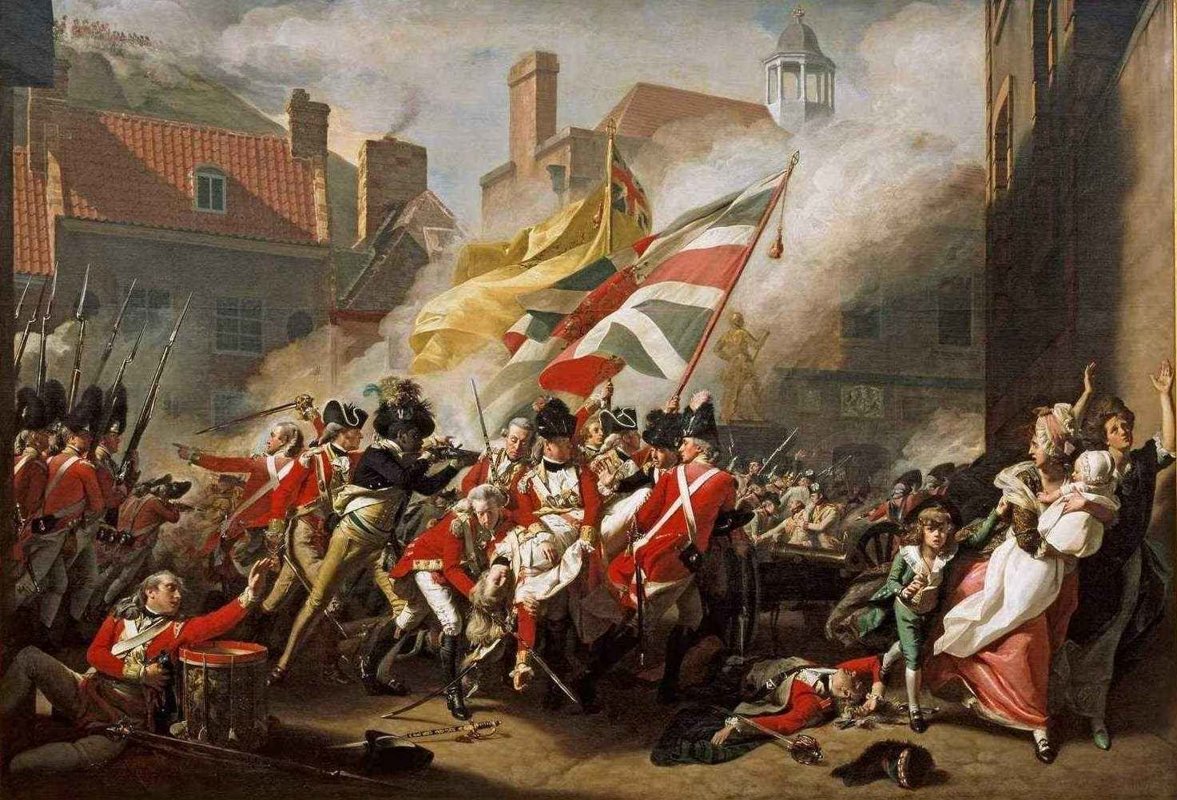 The Seven Years War which was started in 1756 and ended in 1763 had an impact on the American Colonies. By defeating France, England occupied Canada. The Americans were freed from the French menace. This enabled the people to stand by themselves. They did not feel the necessity of maintaining the British army at their own expense. After this seven years war the American Colonies began to be revolutionary.
The Seven Years War which was started in 1756 and ended in 1763 had an impact on the American Colonies. By defeating France, England occupied Canada. The Americans were freed from the French menace. This enabled the people to stand by themselves. They did not feel the necessity of maintaining the British army at their own expense. After this seven years war the American Colonies began to be revolutionary.

